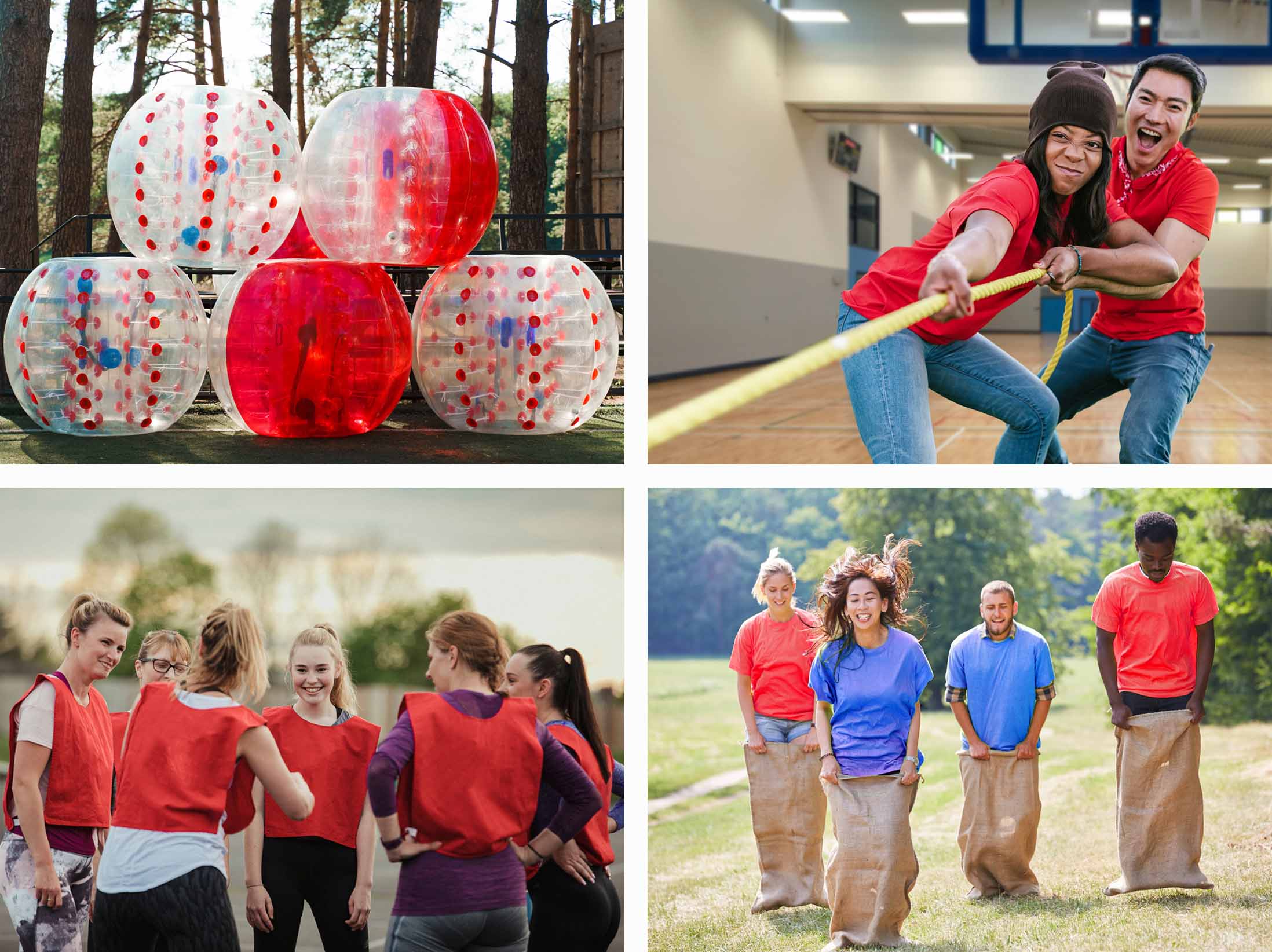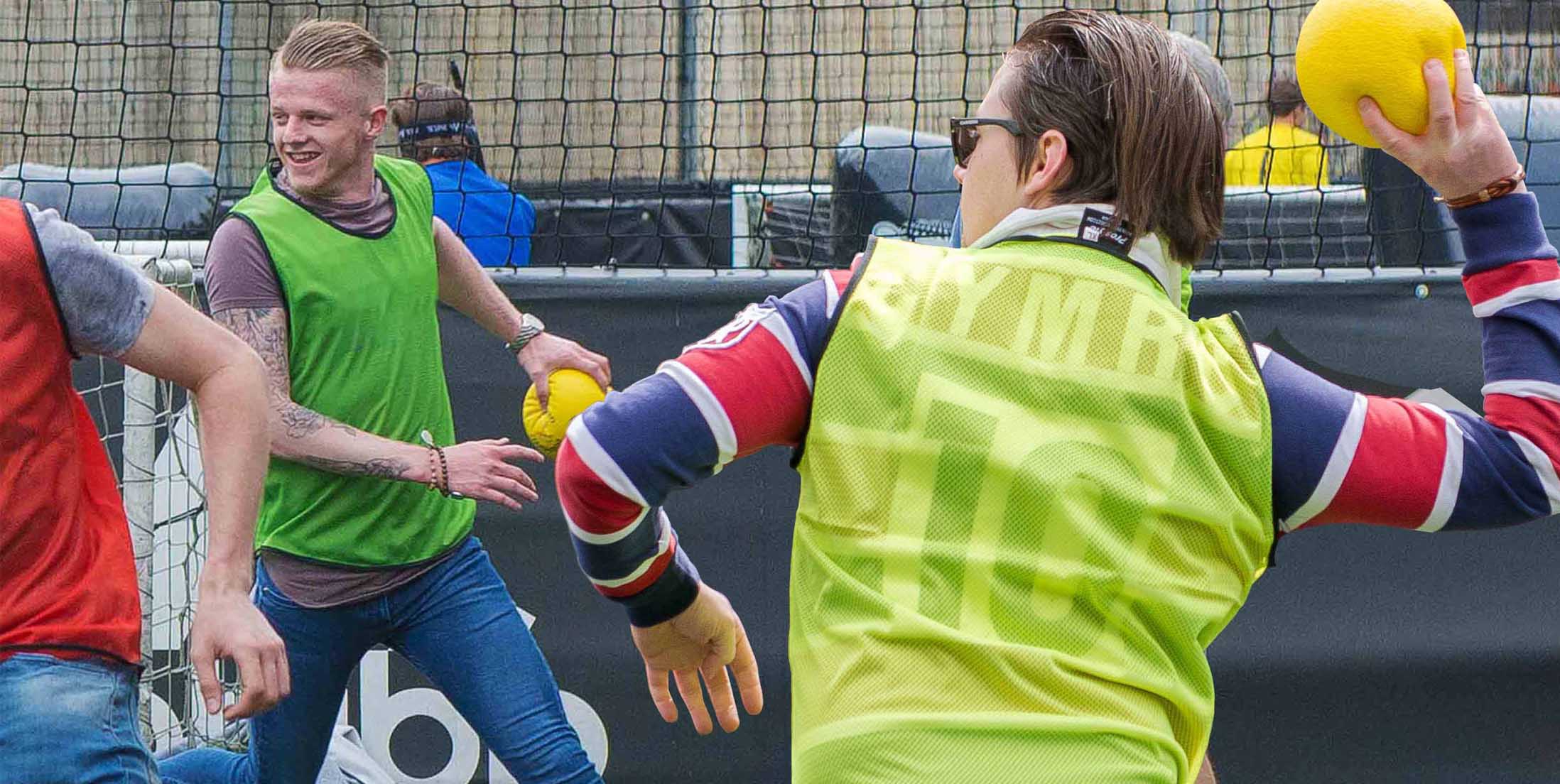Physical Team Building Activities
Physical team building activities are perfect for those that are looking for ideas that require movement and physical exertion to promote teamwork, collaboration, and communication among team members.
Not only do physical team building activities encourage participants to be more active and help to promote an active lifestyle, but engaging in physical adventures can also improve employees' mental and physical health, leading to increased productivity, improved morale and better communication and teamwork skills overall.
The Best Physical Team Building Activities
Engaging in physical team building activities is a great way to build camaraderie and strengthen bonds between team members. Here are some of the best physical team events that can help foster teamwork, communication, and trust among colleagues:
How to Plan Physical Team Building Events
Planning a physical team building event requires careful consideration and attention to detail to ensure that the activity meets the desired objectives and is enjoyable for all participants.
Here are some steps to follow when planning a physical team building event:
1. Determine your Objectives: The first step in planning a physical team building event is to determine what you hope to achieve. Are you trying to improve communication, trust, or teamwork? Once you have identified the objectives, you can choose pursuits that align with these goals.
2. Choose the Activity: There are many different physical team building activities to choose from, including obstacle courses, outdoor adventures, sports tournaments, and scavenger hunts. Consider the interests and abilities of your team members when selecting an activity.
3. Set a Budget: The cost of physical team building activities can vary widely depending on the type of activity, the location, and the number of participants. Setting a budget will help you narrow down your options and avoid overspending.
4. Select a Venue: The venue you choose will depend on the activity you have selected. Outdoor activities may require a park or wilderness area, while indoor experiences may require a gymnasium or conference room.
5. Plan Logistics: Once you have selected the activity and venue, you will need to plan the logistics of the event. This includes arranging transportation, scheduling the event, and ensuring that all necessary equipment and supplies are available.
6. Communicate with Participants: Before the event, it's important to communicate all necessary details to the participants, including the date, time, location, and what they should bring. It's also a good idea to provide a brief overview of the activity and what they can expect.
By following these steps, you can plan a successful physical team building event that helps your team members bond and work together more effectively.
Benefits of Physical Team Building Activities
Physical team building activities offer a range of benefits that can help teams work more effectively and efficiently.
Here are some of the key benefits of physical team building activities:
1. Improved Communication and Collaboration: Physical team building activities often require participants to work together closely, which in-turn can improve communication and collaboration skills. By working together towards a common goal, team members can learn to communicate more effectively and develop a better understanding of each other's strengths and weaknesses.
2. Encourages Lots of Teamwork: Physical team building activities often require participants to work in teams, which is perfect for encouraging a sense of camaraderie and teamwork. Team members can learn to rely on each other and support each other throughout the activity, which can translate to improved teamwork in the workplace.
3. Gets the Blood Pumping: Physical team building activities get participants up and moving, which can boost energy levels and get the blood pumping. This can lead to improved mental clarity and focus, which can help team members think more clearly and make better decisions.
4. Enhances Fast-Paced Decision-Making: Many physical team building activities require participants to think quickly and make fast-paced decisions. This can help improve decision-making skills and teach team members to think on their feet.
5. Boosted Morale: Physical team building activities can be a fun and exciting way to break up the monotony of the workday. By providing a break from routine and offering an opportunity for team members to bond and have fun together, physical team building activities can boost morale and improve job satisfaction.
Overall, physical team building activities can be a valuable tool for improving communication, teamwork, decision-making skills, and morale in the workplace. By providing a fun and engaging way for team members to work together towards a common goal, physical team building activities can help teams become more effective and efficient.
How do I select the right Physical Team Building Activities for my Team?
Selecting the right physical team building activities for your team can be a challenging task. To ensure that the activity is effective and enjoyable, it's important to consider several key factors.
Here are some tips on how to select the right physical team building activities for your team:
1. Set Clear Objectives and Goals: Before selecting an activity, it's important to determine what you hope to achieve. Are you looking to improve communication, build trust, or encourage teamwork? Once you have identified your objectives, you can choose activities that align with these goals.
2. Provide Necessary Resources and Equipment: Make sure that you have all the necessary resources and equipment to conduct the activity safely and effectively. This may include things like first aid kits, safety gear, and appropriate clothing and footwear.
3. Ensure Safety and Risk Management: Safety should be a top priority when selecting physical team building activities. Make sure the activity is appropriate for the level of risk that your team members are comfortable with, and that safety precautions are in place. Consider conducting a risk assessment prior to the event to identify potential hazards and take steps to mitigate them.
4. Select Appropriate Activities based on Team Dynamics and Preferences: It's important to consider the abilities and interests of your team members when selecting an activity. Choose an activity that everyone can participate in and that aligns with their interests. If some team members are more physically fit than others, consider selecting an activity that can be modified to accommodate different fitness levels.
5. Evaluate the Activity: After the event, it's important to evaluate the activity to determine its effectiveness and gather feedback from participants. Use this feedback to improve future activities and ensure that they meet the needs of your team.
By considering these factors, you can select the right physical team building activity for your team that is effective, enjoyable, and safe.
Wrap-Up
In conclusion, physical team building activities can be a valuable tool for improving communication, collaboration, decision-making skills and morale in the workplace. By providing a fun and engaging way for team members to work together towards a common goal, physical events can help teams become more effective and efficient.
To select the right team activity, it's important to consider factors such as team dynamics, preferences, safety, and objectives. Investing in team days can pay off in the long run, as it can lead to improved job satisfaction, increased productivity, and better outcomes for the organization as a whole. By prioritizing team building, organizations can create a positive and supportive work environment that promotes success and growth.
FAQs: Team Building Activities for Small Groups
Q: What are physical team building activities?
A: Physical team building activities are exercises or challenges that require physical movement or activity, and are designed to build teamwork and collaboration among team members.
Q: What are the benefits of physical team building activities?
A: Physical team building activities have numerous benefits, including improved communication and collaboration, increased morale, enhanced decision-making skills, and boosted productivity.
Q: How do physical team building activities promote teamwork and collaboration?
A: Physical team building activities promote teamwork and collaboration by requiring team members to work together towards a common goal, communicate effectively, and rely on each other's strengths to overcome challenges.
Q: What are some examples of physical team building activities?
A: Examples of physical team building activities include obstacle courses, scavenger hunts, team sports, trust exercises, and group hikes or outdoor adventures.
Q: How do I select the right physical team building activities for my team?
A: To select the right physical team building activities for your team, consider factors such as team dynamics, preferences, safety, and objectives. Set clear goals and objectives, select appropriate activities, ensure safety and risk management, and provide necessary resources and equipment.
Create Your Team Day


